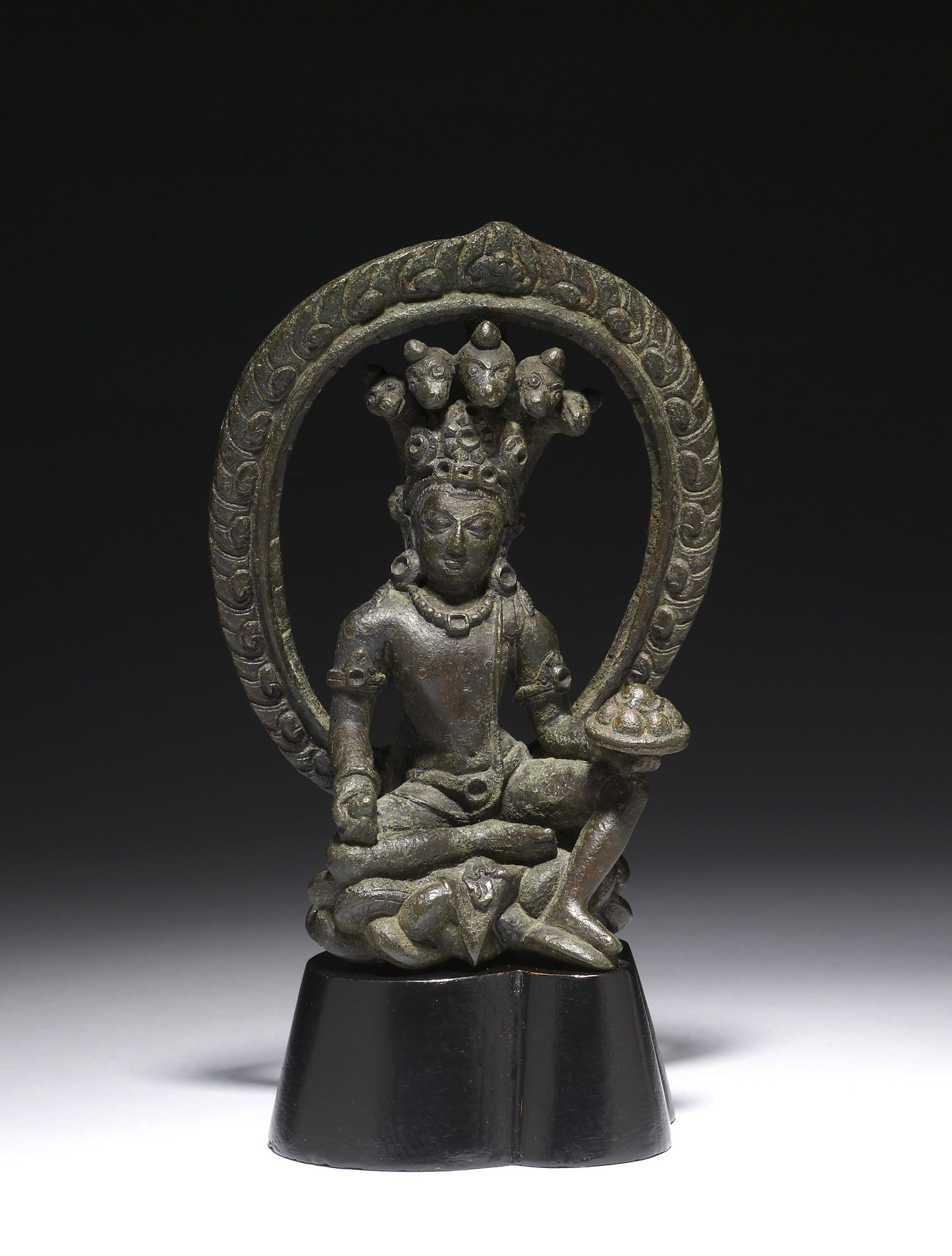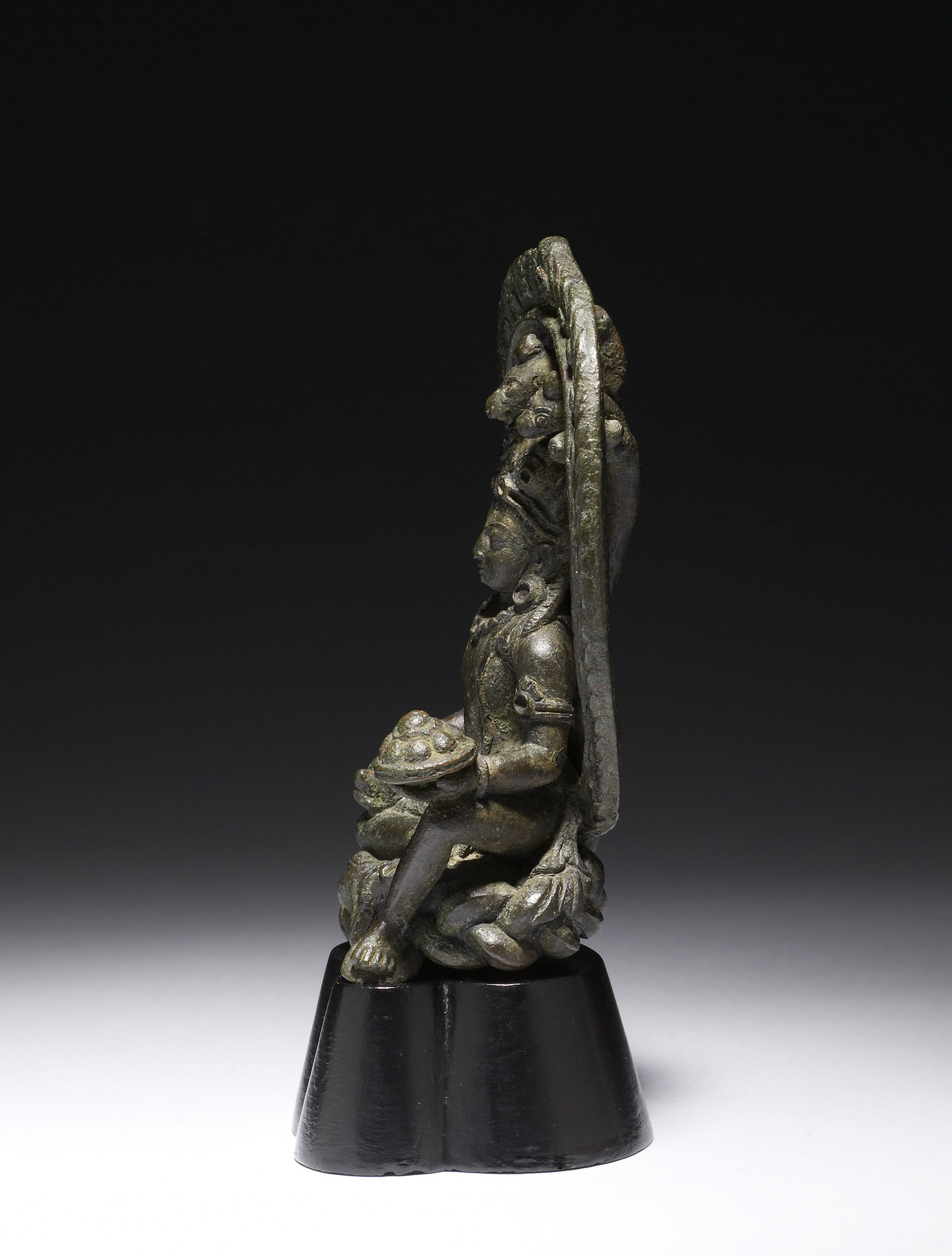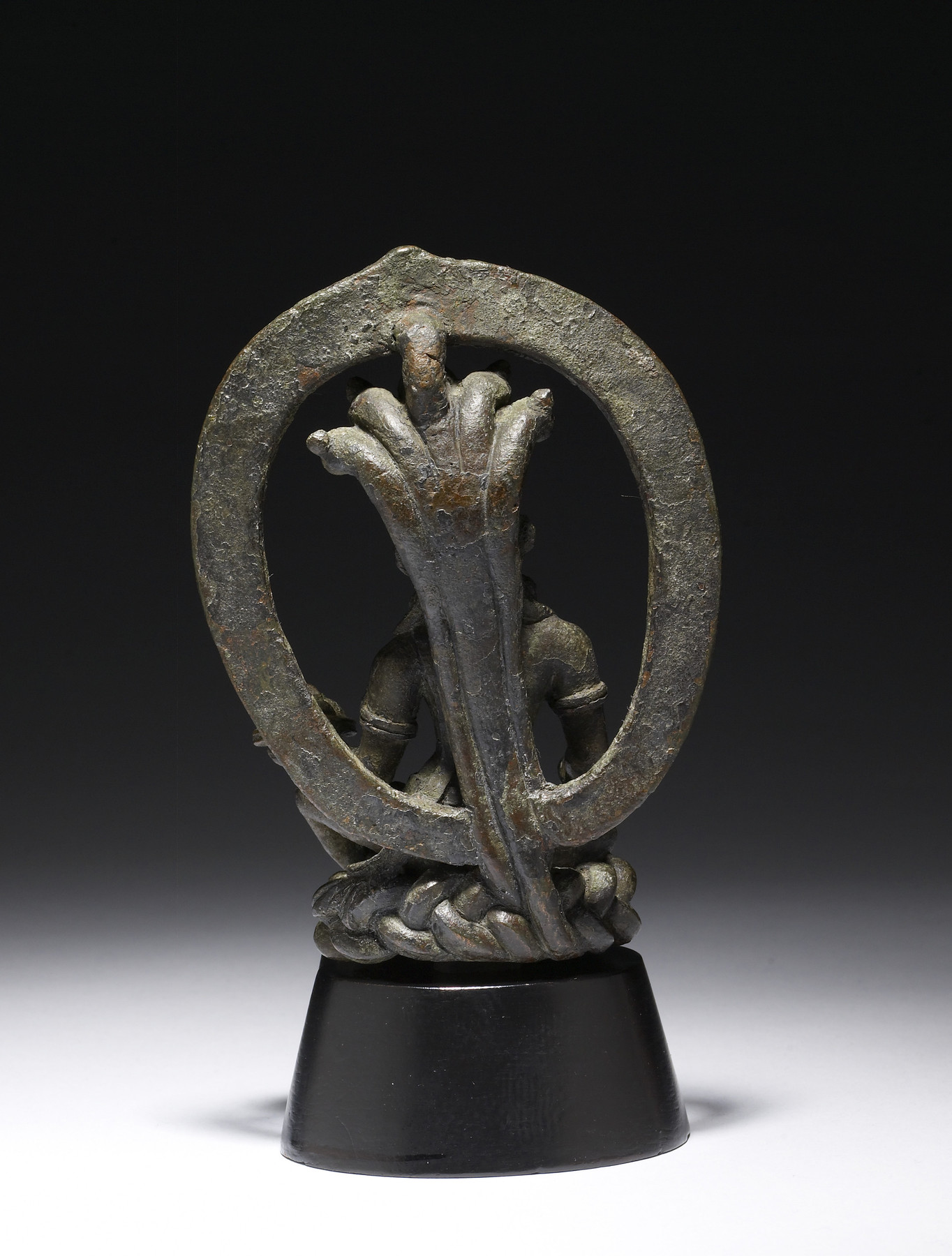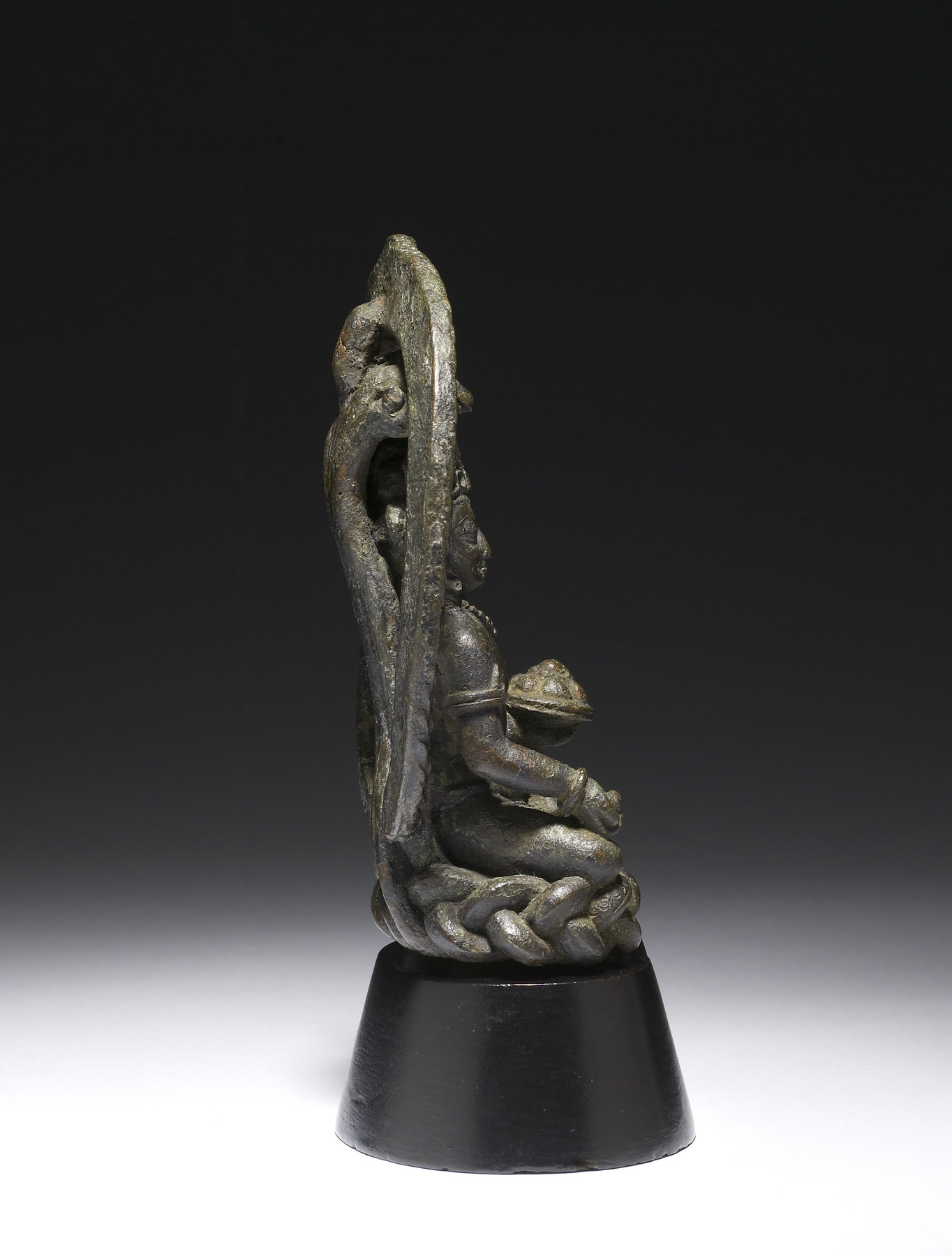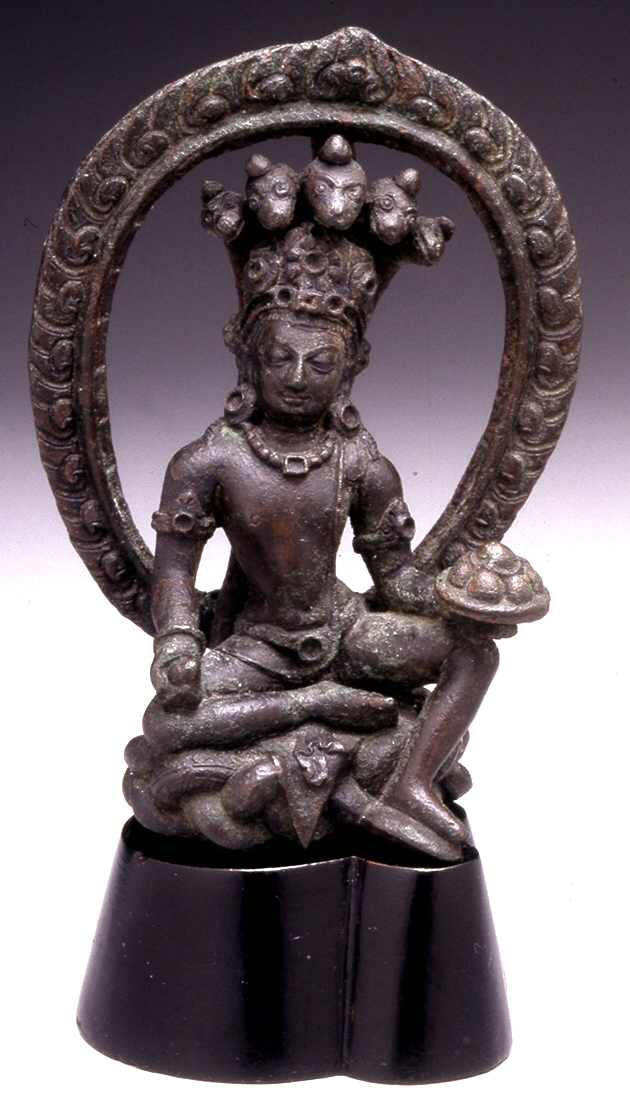Serpent Deity (Nagaraja)
(India, Nepal, and Tibet)
Crowned by a five-headed cobra whose coiled body weaves itself into a throne, this bejeweled figure is a "nagaraja," or divine serpent-king. As inhabitants of watery places and guardians of the earth’s hidden treasures, serpent deities are associated with fecundity and wealth. This nagaraja holds a gem in one hand and a plate of offerings in the other. Once inlaid with semiprecious stones, the sculpture may have functioned in a Hindu or Buddhist context, for nagas are sacred across religious traditions.
Provenance
Provenance (from the French provenir, 'to come from/forth') is the chronology of the ownership, custody, or location of a historical object. Learn more about provenance at the Walters.
Oriental Antiquities, London [date and mode of acquisition unknown]; John and Berthe Ford, Baltimore, November 19, 1969, by purchase; Walters Art Museum, 2021, by gift.
Exhibitions
| 2001-2003 | Desire and Devotion: Art from India, Nepal, and Tibet in the John and Berthe Ford Collection. The Walters Art Museum, Baltimore; Santa Barbara Museum of Art, Santa Barbara; Albuquerque Museum, Albuquerque; Birmingham Museum of Art, Birmingham; Hong Kong Museum of Art, Hong Kong. |
Geographies
Nepal (Place of Origin)
Measurements
H: 5 1/4 in. (13.34 cm); Height with base: 7 × W: 4 × D: 2 in. (17.78 × 10.16 × 5.08 cm)
Credit Line
Gift of John and Berthe Ford, 2021
Location in Museum
Not on view
Accession Number
In libraries, galleries, museums, and archives, an accession number is a unique identifier assigned to each object in the collection.
In libraries, galleries, museums, and archives, an accession number is a unique identifier assigned to each object in the collection.
54.3125

